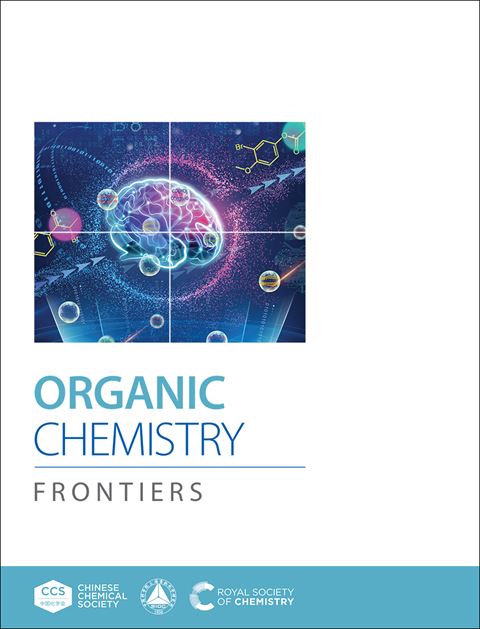Understanding the influence of metal centers on the mechanism and chemoselectivity of transition-metal-catalyzed cyclizations of dienyl aldehydes
IF 4.6
1区 化学
Q1 CHEMISTRY, ORGANIC
引用次数: 0
Abstract
Hydroacylation of alkenes represents a pivotal synthetic method for the atom-economical construction of valuable ketones, with current research focusing on using 3d transition metals and improving reaction selectivity. This study presents a computational investigation into transition-metal-catalyzed divergent cyclizations of dienyl aldehydes, emphasizing the influence of metal centers on the mechanism and chemoselectivity. For both Co(I) and Rh(I) catalysts, the reaction pathway involves the oxidative addition and alkene insertion, resulting in the formation of five-membered metallacycle intermediates. Our calculations reveal that the stability and reactivity of the metallacycle intermediates play crucial roles in regulating the chemoselectivity. The Co(I) catalysts promote the preferential formation of strained cyclobutanones with high enantioselectivity due to the relatively lower activation barrier for reductive elimination from the corresponding cobaltacycle intermediate. Conversely, for Rh(I) catalysts, endocyclic β-hydride elimination and migratory insertion occur more favorably owing to the stability of rhodacycle intermediates, leading to the formation of cyclopentanones. Energy decomposition analysis indicates that the electrostatic and orbital interactions are dominant factors influencing the relative stability of these metallacycle intermediates. This work elucidates the contrasting effects of cobalt and rhodium on reaction mechanisms and chemoselectivity, offering valuable insights into designing catalytic systems for efficient and selective hydroacylation reactions.了解金属中心对过渡金属催化的二烯基醛环化的机理和化学选择性的影响
本文章由计算机程序翻译,如有差异,请以英文原文为准。
求助全文
约1分钟内获得全文
求助全文
来源期刊

Organic Chemistry Frontiers
CHEMISTRY, ORGANIC-
CiteScore
7.90
自引率
11.10%
发文量
686
审稿时长
1 months
期刊介绍:
Organic Chemistry Frontiers is an esteemed journal that publishes high-quality research across the field of organic chemistry. It places a significant emphasis on studies that contribute substantially to the field by introducing new or significantly improved protocols and methodologies. The journal covers a wide array of topics which include, but are not limited to, organic synthesis, the development of synthetic methodologies, catalysis, natural products, functional organic materials, supramolecular and macromolecular chemistry, as well as physical and computational organic chemistry.
 求助内容:
求助内容: 应助结果提醒方式:
应助结果提醒方式:


